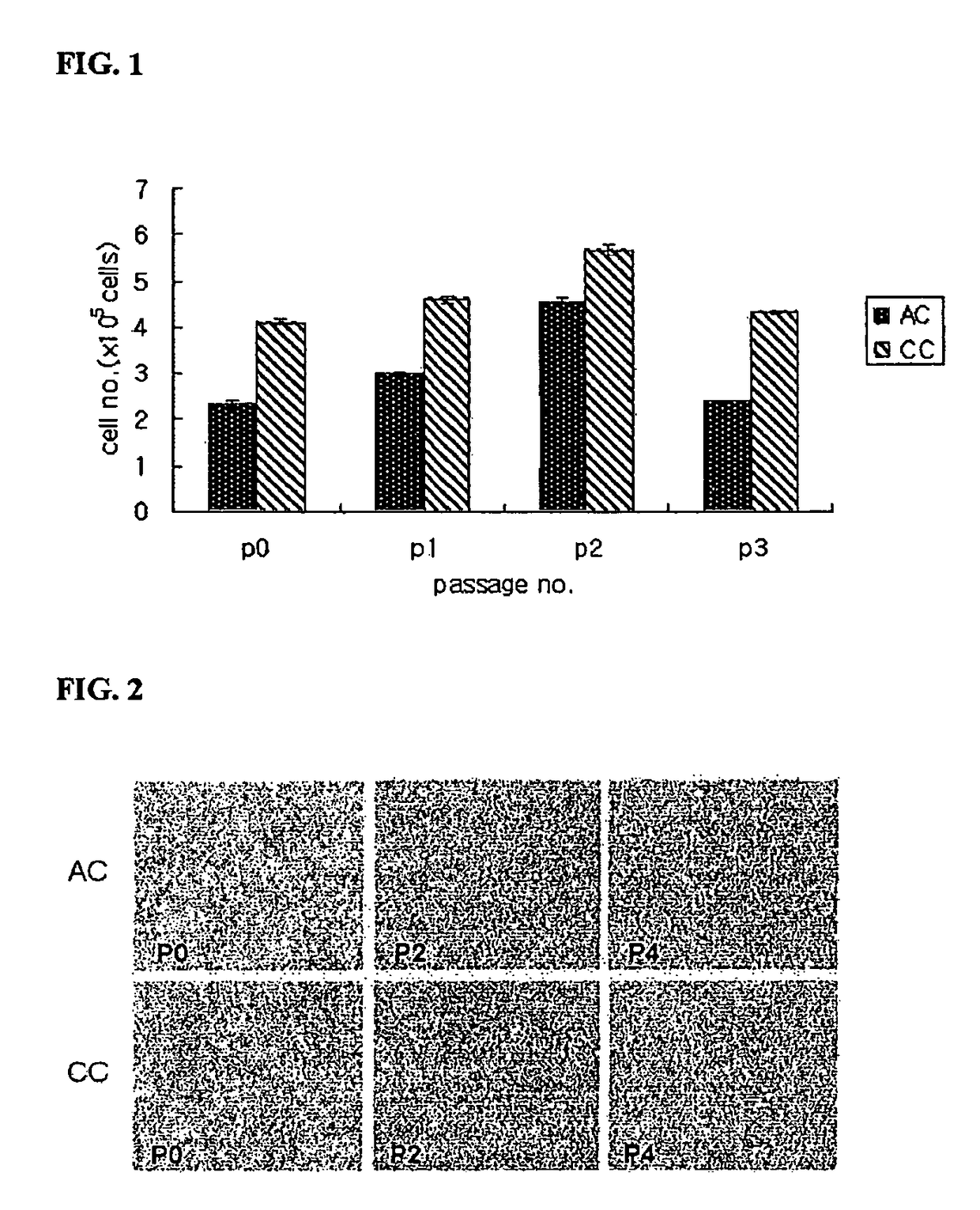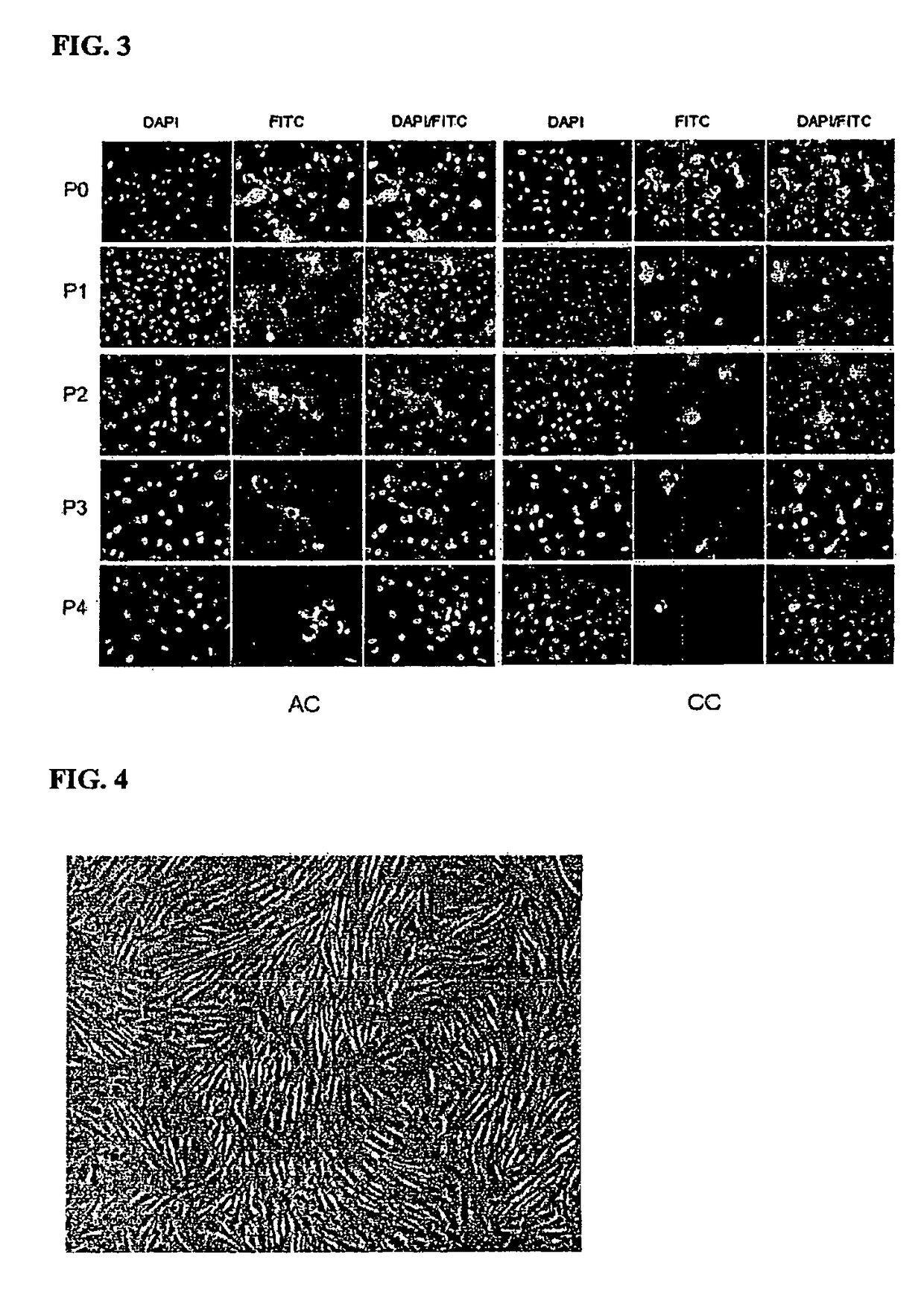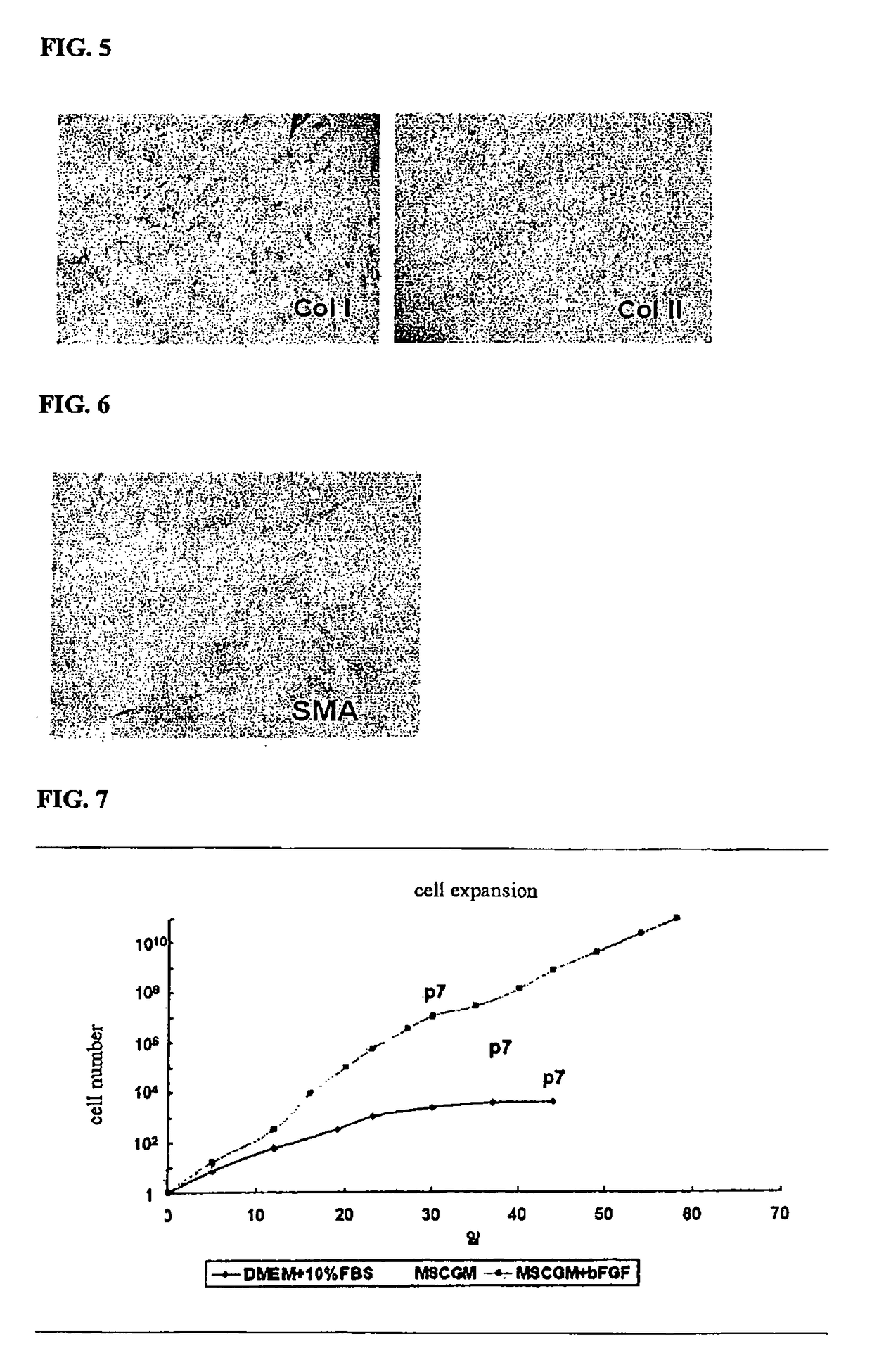Artificial cartilage containing chondrocytes obtained from costal cartilage and preparation process thereof
a technology of chondrocytes and costal cartilage, which is applied in the field of artificial cartilage containing chondrocytes obtained from costal cartilage, can solve the problems of premature degeneration, limited ability of adult cartilage to regenerate, and damage to articular cartilage, so as to confirm the ability of use and achieve effective articular regeneration
- Summary
- Abstract
- Description
- Claims
- Application Information
AI Technical Summary
Benefits of technology
Problems solved by technology
Method used
Image
Examples
example 1
n on Whether Costal Chondrocytes can be Donor Cell Source for Articular Cartilage Repair
Materials and Methods
[0057]Isolation of Chondrocytes
[0058]Articular and costal cartilages were obtained from 3 to 4 months old New Zealand White Rabbit, and then weighed. To harvest costal cartilage, animals were anesthetized by intravenous injection of a mixture of xylazine hydrochloride (2 mg / weight kg, Rompun, Bayer, Korea) and ketamine hydrochloride (6-10 mg / weight kg, ketalar, Yuhan Co., Korea). The skin in the region of the chest was shaved, washed with alcohol, and prepared with povidone-iodine solution. The back side of the right chest was opened, and 9th and 10th costal cartilages were exposed. The costal cartilages, after removing soft adhering tissues, were then weighed. These cartilages were minced into 1-2 mm3 pieces and rinsed 3 times in D-PBS (Dulbecco's phosphate buffered saline; Jeil Biotech services Inc., Taegu, Korea). After being rinsed, the minced cartilage was digested by th...
example 2
ion on Whether Fully Dedifferentiated Costal Chondrocytes Show MSC's Properties
Materials and Methods
[0079]Isolation of Chondrocytes
[0080]Costal cartilages were obtained from 4 to 5 months old New Zealand White Rabbit. The skin in the region of the chest was shaved, washed with alcohol, and prepared with povidone-iodine solution. The back side of the right chest was opened, and 9th and 10th costal cartilages were exposed. The costal cartilages, after removing soft adhering tissues, were then weighed. These cartilages were minced into 1-2 mm3 pieces and rinsed 3 times in D-PBS (Dulbecco's phosphate buffered saline; Jeil Biotech services Inc., Taegu, Korea). After being rinsed, the minced cartilage was digested by the enzyme cocktail solution including collagenase D (2 mg / ml Roche Diagnostic GmbH, Germany), hyaluronidase (1 mg / ml, Roche), and DNase (0.75 mg / ml, Roche) under 37° C. and 5% CO2 for overnight. Then the solution was filtered through a 53 μm nylon mesh, isolated cells were w...
example 3
n on Expansion of Costal Chondrocytes and their Differentiation into Cartilage According to Culture Condition (DMEM+10% FBSs, MSCGM or FGF-Containing MSCGM)
Materials and Methods
[0085]Isolation and Culture of Chondrocytes
[0086]Chondrocytes were isolated by the method as described above, and viable cells were counted on Haemocytometer based on the trypan blue exclusion. The chondrocytes were plated at a cell density of 5×105 cells / 100 mm diameter Petri dish, and cultured in DMEM (DMEM-FBS), MSCGM (Cambrex Bio Science Walkersville, Inc., MD, U.S.A.), or MSCGM added with 1 ng / ml of FGF (R&D System Inc., MN, U.S.A.).
[0087]Cell Expansion Rate According to the Medium
[0088]When the dish was filled with the cells, the cells were removed by Trypsin-EDTA (Gibco), and viable cells were counted on Haemocytometer based on the trypan blue exclusion to evaluate cell expansion rate. Then, the cells were plated at a cell density of 5×105 cells / 100 mm diameter Petri dish, and cultured in the same medi...
PUM
| Property | Measurement | Unit |
|---|---|---|
| diameter | aaaaa | aaaaa |
| weight | aaaaa | aaaaa |
| weight | aaaaa | aaaaa |
Abstract
Description
Claims
Application Information
 Login to View More
Login to View More - R&D
- Intellectual Property
- Life Sciences
- Materials
- Tech Scout
- Unparalleled Data Quality
- Higher Quality Content
- 60% Fewer Hallucinations
Browse by: Latest US Patents, China's latest patents, Technical Efficacy Thesaurus, Application Domain, Technology Topic, Popular Technical Reports.
© 2025 PatSnap. All rights reserved.Legal|Privacy policy|Modern Slavery Act Transparency Statement|Sitemap|About US| Contact US: help@patsnap.com



